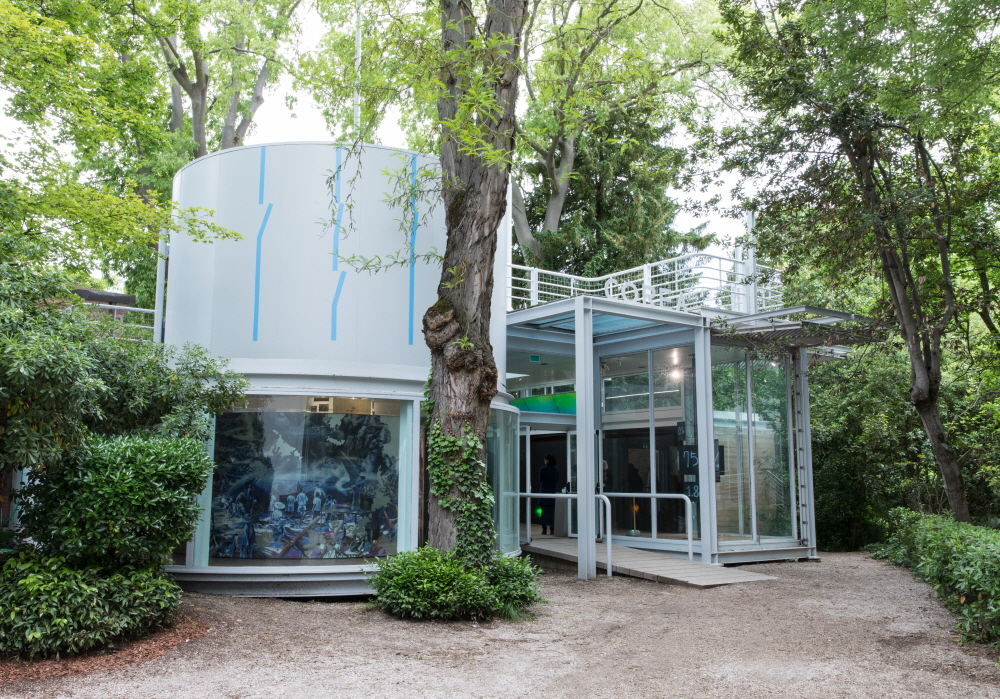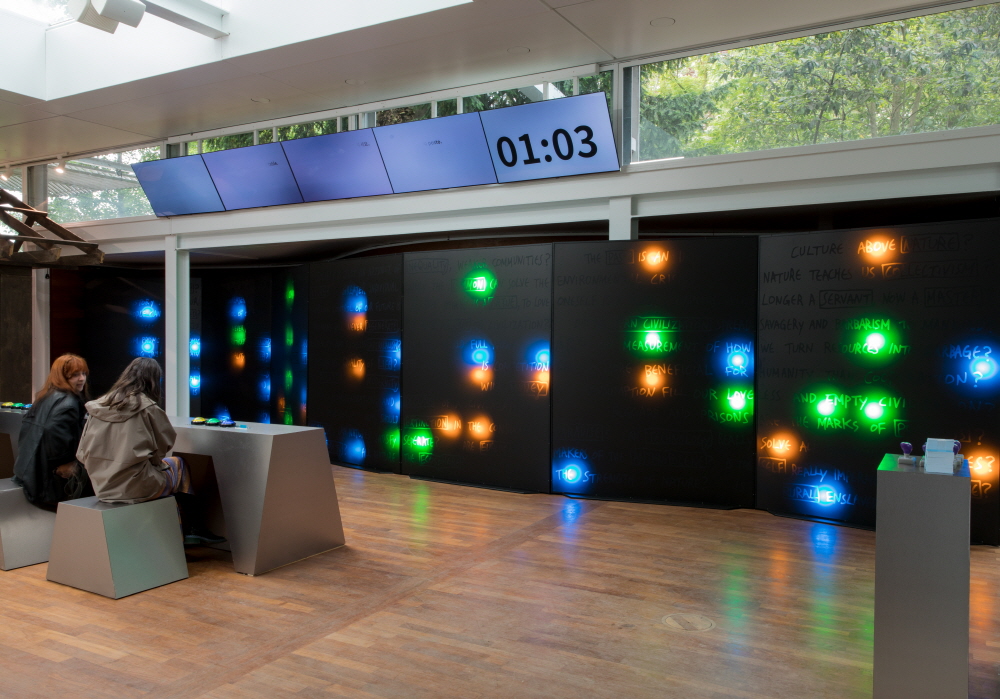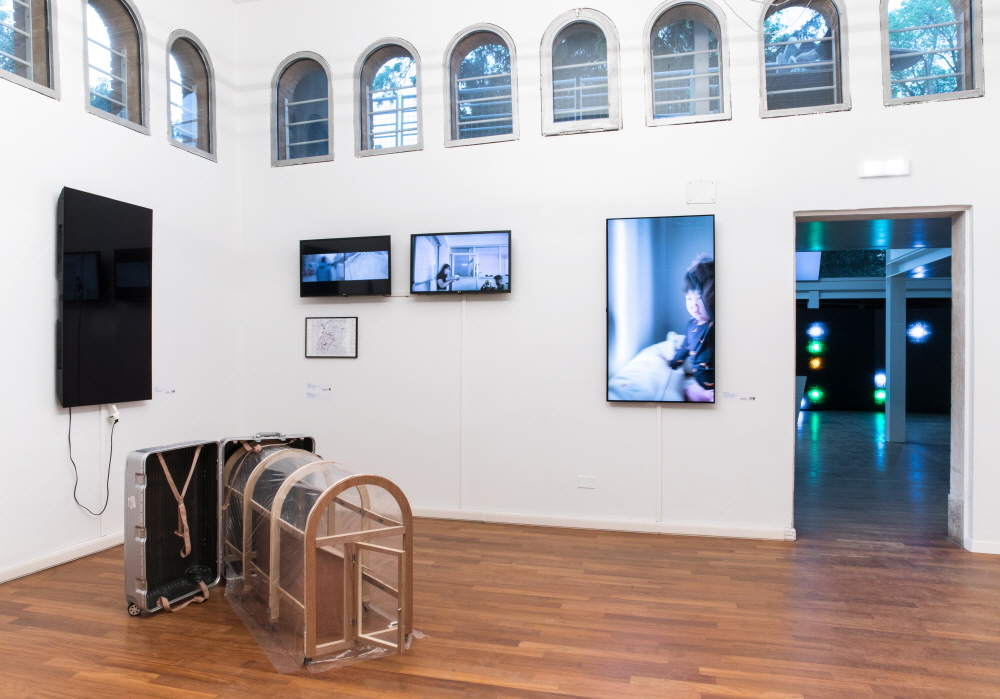SPACE July 2023 (No. 668)
 View of the Korean Pavilion / Image Courtesy of Art Council Korea ©Agne Raceviciute
View of the Korean Pavilion / Image Courtesy of Art Council Korea ©Agne Raceviciute
On May 20, the 2023 Venice Biennale opened in Venice, Italy. A total of 63 national pavilions will participate in this Biennale, which has the theme of ‘The Laboratory of the Future’. This Korean Pavilion exhibition was curated by Jung Soik (principal, Urban Mediation Project) and Park Kyong (professor, University of San Diego). This is the first time with co-directors since the initiation of the Korean Pavilion. The theme of this exhibition is ‘2086: Together How?’ (covered in SPACE No. 663). With the 3rd Anyang Public Art Project (APAP2010) as their first collaboration with a focus on community, the two directors again take community as the key theme of this Korean Pavilion. The curators pose the following questions: What will the world look like in 2086 when the world’s population peaks? How can we then live together? The exhibition is organised in two formats. The site-specific project of ‘Four Future Communities’ (hereinafter Future Community Project), which showcases the results of collaborative research by architects and community activists, and a participatory game format of ‘Together How’. The Future Community Project was conducted based on field researches of East Incheon, Gunsan, and villages in Gyeonggi-do, and includes future scenario projects of virtual cities envisioned by an imaginative understanding of the results derived from the research. Min Woongi (principal, Space Beam) and Suh Yehre (principal, Urban Terrains Lab) present the movement of the local community surrounding redevelopment in the Baedari area of East Incheon through audio and visual materials under the theme of ‘Ruin as Future, Future as Ruin’. Studio UDTT (co-principals, Yoon Zoosun, Chae Ahram), Yerin Kang (professor, Seoul National University), and Lee Chihoon (co-principal, SoA) present the concept of ‘Destructive Creation’ through video recordings of activities, such as workshops on demolishing empty houses in Gunsan, a city which is now facing the problems of population decline and low growth. Among the installations on display is a reassembled roof structure of a house that was dismantled, along with tools used in the disassembly process. Kim Wolsik and N H D M (co-principals, Nahyun Hwang, David Eugin Moon) tell the stories of migrant workers in Gyeonggi-do villages in various ways such as collages, paintings, and storytelling, emphasising the ‘Migrating Futures’. Lastly, Jung Jaekyung deals with the ethical issues around maintaining the community by depicting a city in 2086 through the video titled A Future.The Game of Together How, intended to be participated in after watching the Future Community Project, borrows the format of a quiz show and consists of an 11-minute session in which participants answer seven questions posed by the host in the video. The game asks participants to choose their own stance on political, economic, and social issues within a time limit, with environmental crisis and human extinction scenarios in mind. The result of the game is displayed on the electronic signboard on the front, and makes us aware that the world we are facing, and will be faced with in the future, is the sum of individual choices. The answer to the question posed by the two directors is up to each of us. The exhibition will be held until Nov. 26. by Kim Jia
 View of ‘The Game of Together How’ section
View of ‘The Game of Together How’ section
 View of ‘Destructive Creation’ section by Studio UDTT, Kang Yerin, Lee Chihoon
View of ‘Destructive Creation’ section by Studio UDTT, Kang Yerin, Lee Chihoon
 View of ‘A Community of Difference’ section by Kim Wolsik / Images Courtesy of Art Council Korea ©Agne Raceviciute
View of ‘A Community of Difference’ section by Kim Wolsik / Images Courtesy of Art Council Korea ©Agne Raceviciute





